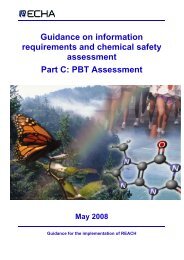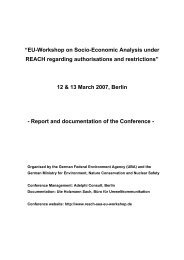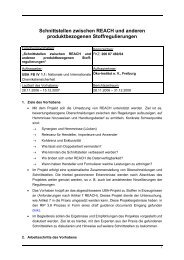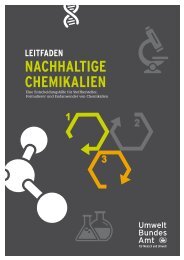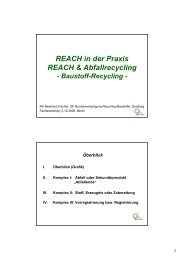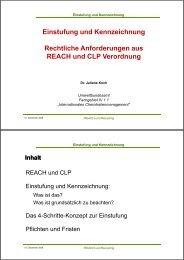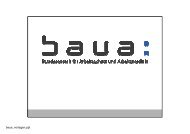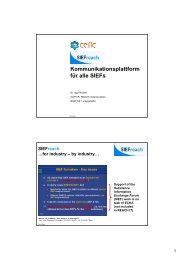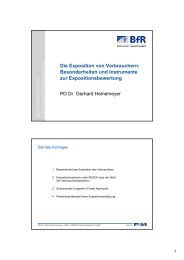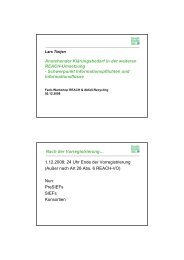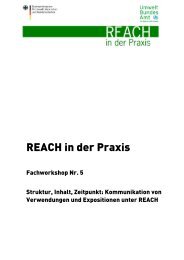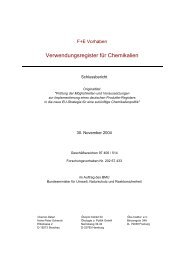PBT Assessment - REACh
PBT Assessment - REACh
PBT Assessment - REACh
You also want an ePaper? Increase the reach of your titles
YUMPU automatically turns print PDFs into web optimized ePapers that Google loves.
PART R11 – <strong>PBT</strong> ASSESSMENT<br />
(c) Generation of new information<br />
Degradability and chronic toxicity testing of MCSs and UVCBs thought to contain <strong>PBT</strong><br />
constituents, is generally not advocated, as the results can often be difficult to assess. For this<br />
reason QSAR estimation and read across are often chosen approaches for generating new<br />
information, other than the testing of strategically selected individual constituents, if needed. With<br />
respect to the order of testing, for the <strong>PBT</strong> assessment of a mono-constituent substance, this would<br />
generally proceed stepwise with the assessment of potential persistence addressed first, followed by<br />
bioaccumulation (if the P criteria is met) and then toxicity testing (if both P and B are met). For<br />
MCSs and UVCBs this assessment strategy may need to be further evaluated and treated on a case<br />
by case basis, depending upon the ease and cost of generating such data and animal welfare<br />
considerations. Thus for UVCBs and MCS, this process would probably start with a B assessment<br />
including initial assessments of potential for uptake and metabolism (see Section R.11.1.3.2 on<br />
B assessment).<br />
(d) Final assessment<br />
For those substances containing many constituents a case-by-case approach is necessary and only<br />
some general guidance can be given. In relation to the question, “how much information is<br />
required”, a weight of evidence approach should be applied which will include expert judgement<br />
addressing many other issues including feasibility etc.<br />
The further steps in terms of information gathering, and implementation of RMM should be related<br />
to the magnitude of impact to human health and environment (e.g. percentage of <strong>PBT</strong>/vPvB<br />
impurities, release potential including consideration of the tonnage and the use categories).<br />
An example approach, based on the Hydrocarbon Block approach and the scheme outlined above, is<br />
given in Appendix R. 11-3.<br />
48



